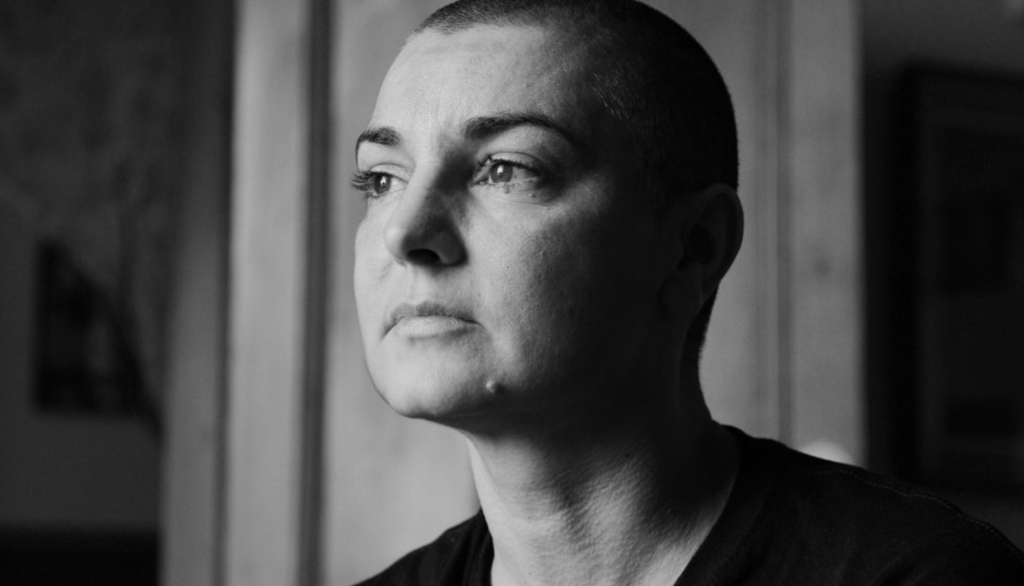

Her life bore witness to truths we need to remember
On vacation in County Kerry, Ireland, I spent my Thursday morning watching the coverage of the death of Sinéad O’Connor. Reporters praised O’Connor as “the voice of her generation”—passionate, operatic, and vulnerable all at the same time. The somber mood of commentary dampened the electricity surrounding the upcoming Gaelic football championship between Kerry and Dublin. While she was a controversial figure in life, in death it seemed that Ireland had come to accept Sinéad O’Connor and her work as part of the country’s rich artistic heritage.
Interestingly, however, the coverage did not dwell on O’Connor’s music, apart from showing soundless clips of her performances on Raidió Teilifís Éireann, Ireland’s national television network. Instead, reporters and commentators emphasized how Sinéad O’Connor asked penetrating questions about Irish society by speaking boldly about subjects usually only mentioned in hushed tones and whispers. O’Connor revealed the horror of the Magdalene Laundries, where “fallen women” were confined to lives of shame and hard labor to atone for their “sins.” She openly advocated for the LGTBQ+ community. She was also honest about her struggles with bipolar disorder and other mental health challenges. She was an activist artist who confronted Irish society, and specifically Irish Catholicism, with often uncomfortable truths.
O’Connor’s music was full of feminist power and her shaved head indicated that she was willing to push back against the conventions that often constrain female artists. This pushback turned to protest when she ripped up a picture of Pope John Paul II during her appearance on Saturday Night Live in 1992. After performing an a cappella cover Bob Marley’s “War,” O’Connor tore up the Pope’s picture and said, “Fight the real enemy.”
Cultural commentators in the mainstream American media have joined together to argue that O’Connor was “right all along.” At the same time, that commentary has generally avoided the question of whether her specific form of protest—defacing an image of a religious figure important, even sacred, to Catholics and non-Catholics alike—was the most appropriate way to express her anger. While tearing up the Pope’s picture was roundly condemned at the time, with Sinéad O’Connor’s death it has become an iconic moment of resistance to a church that has too often failed its faithful. Sinéad O’Connor was an Irish rebel, and a very Catholic one at that.
As a Catholic myself, I remain deeply ambivalent about that particular kind of protest, whether directed against Catholicism or any other religious tradition. Protests that denigrate the core beliefs of a religious community can have the paradoxical effect of drawing attention away from those who actually suffer the most. The history of the Catholic sexual abuse crisis is as complex as it is horrible, and Catholics continue to discern and work through its implications in very painful ways. I have often been asked, “Really, you’re a Catholic? How can you still believe that stuff?” But the conversation rarely goes further. Reducing a religion to its most disturbing aspects can be polemically satisfying, but it often does little to appreciate the internal resources with which religious traditions can critique—and atone for—their own failures and crimes.
Still, Sinéad O’Connor was right about many things. And while I can’t condone ripping up a picture of the Pope, I can admit that I understand the anger. I have known—and worked with—six priests who were later accused of sexual abuse. Though I myself was not abused, I do know many Catholics who were. The sexual abuse crisis in Catholicism is not some abstract concern about safety or church governance. For all Catholics, it’s deeply personal.
Much has been written about Sinéad O’Connor’s passionate and sophisticated vocal stylings. But what always struck me about her artistic work was the Catholic sensibility she embodied. Take, for example, her most well-known song, “Nothing Compares to U,” written by Prince. The lyrics touch upon universal experiences of love and longing. But the way O’Connor performs the song draws attention to her eyes and her tears. In Catholic spirituality tears have great significance as expressions of divine love and care. Eyes too, which are so important in Catholic visual culture, convey a sense of connection between the human and the divine, a sense of beholding and being beheld. She was a Catholic who drew upon the aesthetics of the tradition—perhaps in the hope of moving beyond what she understood to be its constraints.
Sinéad O’Connor’s spiritual journey took her further and further away from the institutional Roman Catholic Church. She was ordained Mother Bernadette Marie in a schismatic Catholic sect and even said mass in Latin several times. Towards the end of her life she converted to Islam, taking the name “Shuhada Sadaqat.” Interestingly, she is reported to have said that religion itself is the problem, and that Islam is anti-religion because it focuses on God alone. Like many Catholics of her generation, she ended up rejecting, in her spiritual quest, the clerical culture of Catholicism. But her Catholicity still shone through her politics and art. May she now rest in peace.
Mathew N. Schmalz is a Professor in the Department of Religious Studies at The College of the Holy Cross. He is the founding editor of the Journal of Global Catholicism and the author of Mercy Matters.
Image: Cancha General